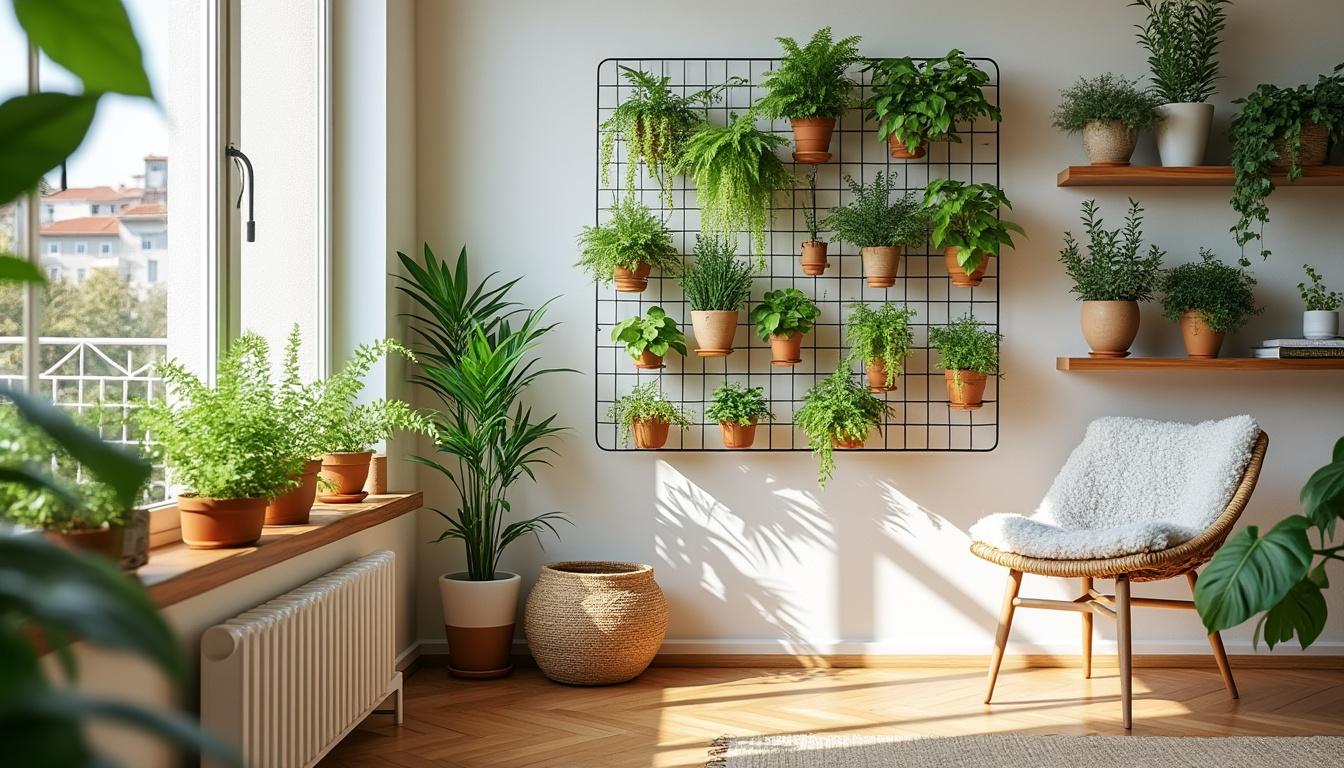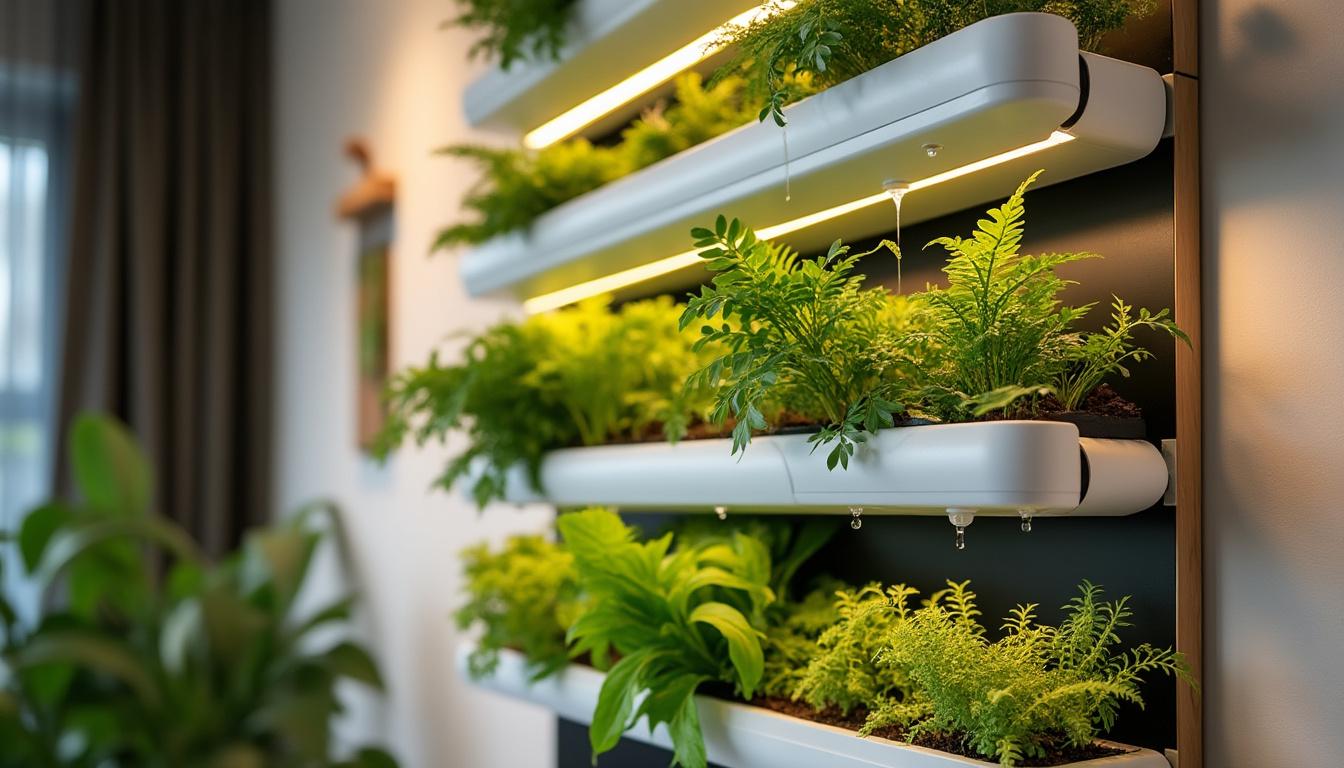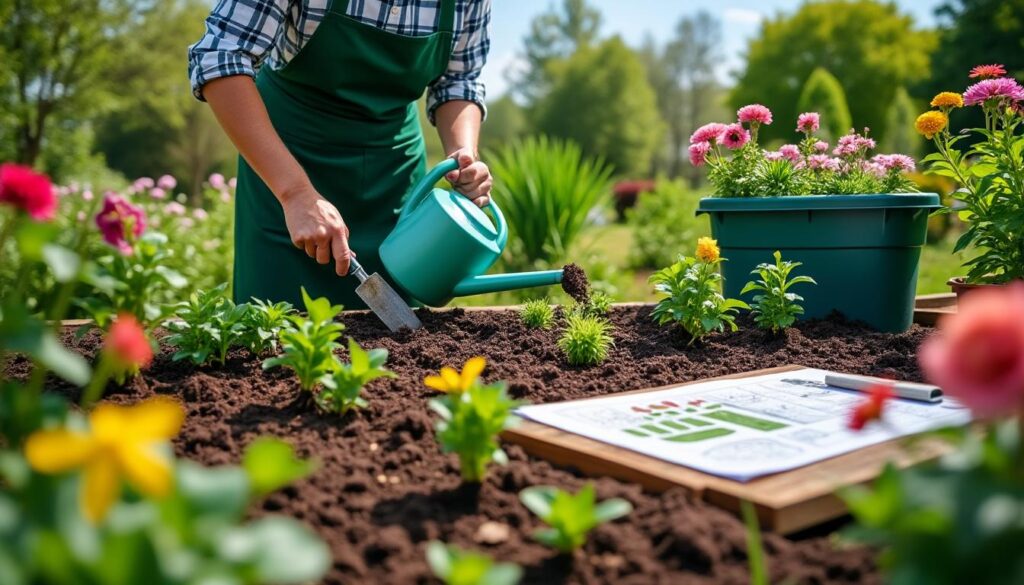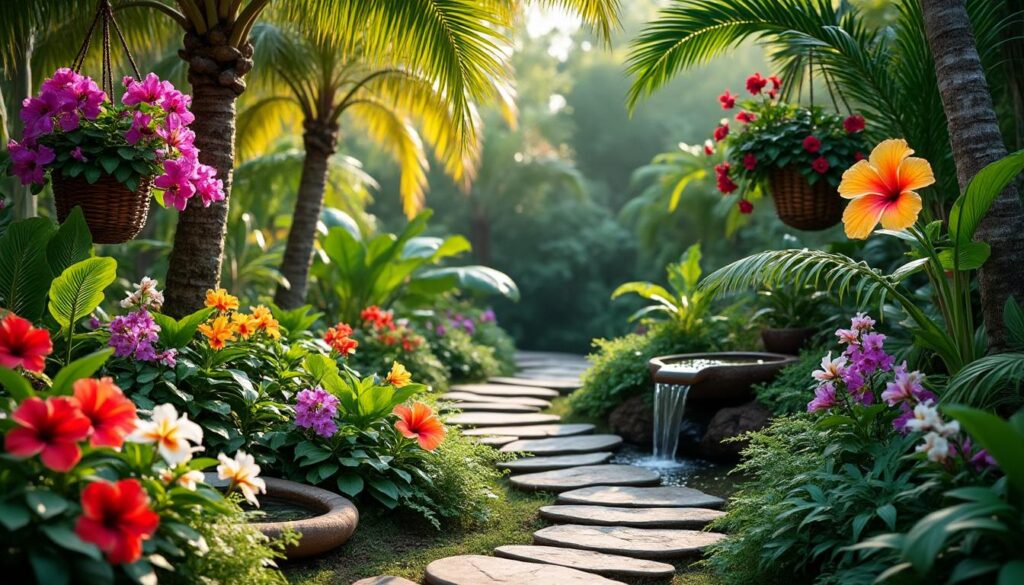Bringing greenery into a small apartment is possible, elegant, and functional. A vertical garden transforms empty walls into comfort, well-being, and spatial efficiency.
This guide gathers practical, sustainable, and easy-to-apply ideas for you to create a customized vertical garden for your space, routine, and budget.
| Short on time? Here’s the essentials: | |
|---|---|
| ✅ | Choose the location by light ☀️: walls with indirect light work best; measure the path of the sun and shield from excessive heat. |
| ✅ | Start small and modular 🧩: floating shelves, felt pockets, and pallets allow you to grow gradually, without construction. |
| ✅ | Water precisely 💧: use plates with drainage, light substrate, and, if possible, a simple watering timer. |
| ✅ | Mix functions 🌿🍋: combine ornamental plants with culinary herbs for beauty and utility in daily life. |
| ✅ | Avoid excess 🚫: do not overload the wall; check fixtures and limit weight per square meter. |
Vertical garden in small apartments: smart planning, light, and the right walls
Before choosing pots and plants, it’s worth defining the “right spot” in the house. The ideal wall receives indirect light for several hours and maintains a stable temperature. In urban apartments, kitchens, glass-enclosed balconies, and east- or west-facing living rooms usually offer the best balance between brightness and thermal comfort.
A safe practice is to observe the light for two or three days. Compass apps and light meters on your phone help identify when the sun shines directly and when it is diffused. Generally, 5,000 to 15,000 lux of indirect light is excellent for most indoor species. If the wall receives strong sun at noon, a fine curtain or micro-perforated screen prevents leaf scorching.
Practical steps to define the location of the vertical garden
The most efficient way begins with a small audit of the space. Mapping light, water points, ventilation, and the wall’s load capacity saves time and costs later. A lightweight drywall wall can bear less weight than a masonry wall; therefore, appropriate fixtures and weight distribution on rails are essential.
- 🧭 Choose the wall: prioritize those that receive indirect light and have easy access for watering and maintenance.
- 🧪 Humidity test: avoid areas with recurring condensation; excess vapor promotes fungi.
- 🪛 Secure fixtures: use anchors and screws suitable for the wall type; check the maximum load per kg/m².
- 🪟 Gentle ventilation: light air currents reduce pests and mold without drying out the substrate.
- 🗓️ Realistic routine: position where you can reach easily, to water and prune in minutes.
One concrete example: Inês lives in a studio in Porto with 1.20 m of free wall next to the window. Instead of a heavy panel, she installed two floating pine wood shelves, with 4 pots of herbs and 3 of foliage. The 14 cm depth keeps the circulation in the room, and a collective collection plate prevents drips on the floor. After two weeks, the basil thrived on the upper level (more light), while the ivy stayed on the lower level, where the light is softer.
As for water, the secret is to drain well. Pots with holes, a layer of expanded clay, and a plate with felt prevent waterlogging. Those who travel frequently may consider a simple drip tube with a faucet timer. In apartments with little moisture, misting leaves 2 to 3 times a week enhances the vigor of ferns and calatheas.
| Criterion 🔎 | How to assess 🧩 | Goal 🎯 |
|---|---|---|
| Light ☀️ | Observe for 2–3 days; use a lux app | 5,000–15,000 lux of indirect light |
| Ventilation 🌬️ | Light airflow, no gusts | Renew air without drying |
| Support ⚖️ | Type of wall and anchors | Distribute weight on rails |
| Water 💧 | Close point or watering can | Drainage + collection plate |
| Maintenance 🧹 | Easy and safe access | Quick weekly prunes |
If you want to solidify the idea with visual examples, it’s worth looking at a practical explanation of arrangement by light and heights.
With the location defined, the next decision is to choose simple solutions that grow with you and the space.

Sustainable DIY ideas: shelves, pallets, pocket gardens, and magnetic pots
“Do-it-yourself” solutions allow you to build a beautiful, lightweight, and low-cost vertical garden. Besides reducing waste, they give freedom to adapt measurements, colors, and plant combinations. In apartments, four strategies stand out for cost-benefit: floating shelves, felt pocket gardens, recycled pallets, and magnetic pots on metal surfaces.
Floating shelves: versatility that grows with the plants
Shelves 12–16 cm deep accommodate pots of 10–12 cm. In light woods (pine, birch) they create lightness; in painted metal, a contemporary touch. The fixing must respect the combined weight of pots + substrate. A small warm LED embedded highlights textures at night without heating the leaves.
- 🪵 Materials: certified wood or metal with electrostatic painting.
- 🪙 Average cost: €20–€45 per shelf, depending on the material.
- 🌿 Use: foliage, herbs, and small succulents combined by height.
Pocket gardens: felt and simplicity on the wall
Panels with pockets of recycled felt are lightweight and easy to install. Each pocket receives a small plant, and excess water can be absorbed by a felt base. They work very well in kitchens, with mint, sage, and chives always at hand.
- 🧵 Quick installation: 4 screws and it’s done.
- 💧 Short watering: a cup per pocket is usually enough.
- 🔁 Rotation: swap out seasonal species without changing the structure.
Recycled pallets: cheap, ecological, and with presence
Pallets become vertical planters with rustic charm. Sand, treat against moisture, and attach geotextile to form pockets of substrate. Perfect for covered balconies and masonry walls. The natural look pairs beautifully with ferns and trailing succulents.
- ♻️ Reuse: less waste and more personality.
- 🛡️ Treatment: water-based varnish to protect the wood.
- 🧯 Safety: pay attention to weight; consider wheels with locks if it’s mobile.
Magnetic pots: the surprise on the refrigerator door
Perfect for micro-spaces and kitchens. Strong magnets hold lightweight pots to metal surfaces. Useful for succulents, micro-greens, and small herbs. The positioning changes in seconds to adjust for light.
- 🧲 Total practicality: move according to daylight.
- 🎨 Cheerful colors: create a “living gallery.”
- 🌱 Ideal: low-water succulents and crassulas.
Miguel and Sofia, in a T2 in Lisbon, combined two floating shelves with a pocket panel and four magnetic pots in the kitchen. The total investment was around €120, and they gained 18 plants in 1.6 m of wall. Weekly maintenance takes no more than 10 minutes, thanks to collection plates and the choice of low-maintenance species.
| Solution 🛠️ | Estimated cost 💶 | Assembly time ⏱️ | Difficulty 🧠 | Best for 🎯 |
|---|---|---|---|---|
| Floating shelves | €20–€45 per piece | 30–60 min | Medium | Bright rooms and kitchens |
| Pocket garden | €25–€60 per panel | 20–40 min | Easy | Light herbs and foliage |
| Recycled pallet | €30–€80 (with treatment) | 1–2 h | Medium | Covered balconies |
| Magnetic pots | €5–€12 each | 5 min | Very easy | Kitchens and metallic areas |
- ⚠️ Mistakes to avoid: no drainage, no collection plate, and excess weight at a single point.
- 🧽 Good practice: geotextile or felt under pots protects the paint.
- 🧴 Bonus tip: mineral oil on the wood, once a year, extends the lifespan.
Want to see someone assembling from scratch? Look for a tutorial with pallets or pockets to visualize the process practically.
If you want to further reduce maintenance, the next step is to explore modular systems with automated watering.
Modular systems and technology for vertical garden: irrigation, LED, and efficient sensors
Ready modules simplify assembly and better control water and substrate. There are panels with interlocking pots, felt systems with watering tracks, and waterproof living frames for interiors. In small spaces, the goal is to have healthy plants with minimal daily intervention, without excessive moisture in the environment.
A popular solution is drip irrigation with a timer. A 5–10 liter reservoir, a mini USB pump, and a programmable controller keep moisture constant and avoid overdoing it. In compact installations, typical consumption hovers around 0.5–2 liters/day, depending on species, season, and ventilation. Complementing with a substrate moisture sensor helps calibrate frequency.
How to size a simple drip irrigation system
Calculate 50–120 ml per pot per watering for common foliage, with 2–4 waterings per week. Succulents need less. Adjust after observing for 7–10 days: turgid leaves without yellowing indicate balance. Use 4 mm tubes, 1 L/h drippers, and valves to balance pressure when there are height differences between pots.
- 🔌 Timer: battery or USB models ensure consistency on holidays and weekends.
- 💡 LED grow: 2–4 h/day in winter corrects light deficiency in indoor divisions.
- 🧪 Sensors: soil moisture and smart plugs send alerts to your phone.
- 🧯 Watertightness: bottom tray with edges prevents water accidents.
For those who value aesthetics, living frames with waterproof internal structure are discreet and beautiful. The interlocking modules allow swapping out plants without disassembling everything. In both cases, make sure the wall is protected by membrane or washable paint.
| Component 🔩 | Function ⚙️ | Typical price 💶 | Pro tip 🧠 |
|---|---|---|---|
| Timer | Schedule waterings | €18–€45 | Use “holiday mode” to reduce flow 🏖️ |
| Mini pump | Pressurize circuit | €12–€30 | Prefer USB with low noise 🔇 |
| LED grow | Provide light | €25–€80 | 4000–6000 K spectrum is versatile 🌈 |
| Sensors | Monitor | €10–€35 | Set alerts >70% 💬 |
| Tray | Contain water | €8–€20 | Line with geotextile felt 🧵 |
- 🛡️ Safety: test the system for 24 h before leaning against the wall.
- 🧯 Protection: washable paint or vinyl film eases cleaning.
- 🧼 Maintenance: clean drippers every 2–3 months.
Want to see examples of discreet systems with automated watering for small houses? There are clear demonstrations with simple assembly and programming.
With technology under control, the next decision is to choose plants that match the light of your apartment and the time you have to care for them.

Choosing plants for a vertical garden in an apartment: light, water, and substrates that work
The curation of species determines the success of your vertical garden. In apartments, favor plants adapted to indirect light, shallow roots, and moderate watering. Mixing textures (large leaves, lace-like, trailing) creates visual depth without requiring huge pots.
For low light, epiphytes and robust plants such as pothos, zamioculca, and snake plant rarely disappoint. In partial shade, ferns and calatheas shine. Where there’s gentle sun, succulents and culinary herbs are an unbeatable duo: beauty and flavor on the same wall.
Smart combinations by orientation and routine
An east-facing wall favors herbs like basil and thyme, with 3–4 hours of sun. The west side calls for species that tolerate heat at the end of the day, such as rosemary and succulents. If your routine is hectic, opt for “forgiving” plants that require weekly watering; if you enjoy daily care, include microgreens and mint for constant harvests.
- 🌑 Low light: pothos, zamioculca, aglaonema.
- 🌤️ Partial shade: fern, calathea, maranta.
- ☀️ Gentle sun: basil, chives, succulents.
- 💪 Low maintenance: sansevieria, peperomia.
- 🍃 Air purification: ivy, spider plant, peace lily.
For the substrate, think light and draining: a mix of peat/coconut + perlite + a bit of mature compost. For herbs, add washed sand for better aeration. And remember that smaller pots dry out faster; your finger in the soil is still the best “sensor” for deciding when to water.
| Condition 🌞 | Suggested plants 🌿 | Watering 💧 | Substrate 🧱 | Extra benefit 💚 |
|---|---|---|---|---|
| Low light | Pothos, Zamioculca | 1×/week | Light + perlite | High resilience |
| Partial shade | Fern, Calathea | 2×/week (without waterlogging) | Rich + draining | Luxurious texture |
| Gentle sun | Basil, Thyme | 2–3×/week | Airy + sand | Fresh culinary use 🍽️ |
| Sunny balcony | Rosemary, Succulents | 1×/week (2× in summer) | Well-draining | Low maintenance |
- ✂️ Strategic pruning: cut tips of herbs to stimulate new growth.
- 🪲 Prevention: weekly inspection avoids pests; 70% alcohol + water resolves light infestations.
- 🧴 Nutrition: diluted liquid fertilizer every 30–45 days maintains vigor without excess.
A coherent selection that matches the light of your apartment reduces problems, saves water, and guarantees a beautiful garden all year round.
Aesthetics, acoustics, and well-being: integrating the vertical garden into decor and daily life
A vertical garden goes beyond aesthetics. In small spaces, it functions as air filter, dampens noise, and organizes environments. Using shelves or trellises as a “green screen” defines work and rest areas without building walls. The sensation of thermal comfort also improves: leaves transpire moisture, softening the dry air typical of winter heating.
To harmonize with the decor, choose materials that are consistent with your style. Light wood combines with minimalist Nordic; black metal goes well with industrial; handcrafted ceramics enhance Mediterranean. The play of heights (trailing above, upright in the middle, substrates below) creates visual rhythm.
Combining colors, textures, and functions
Variegated leaves brighten dark corners. Aromatic herbs bring a functional gesture to the kitchen and balcony. In studios, a trellis panel with jasmine on the window filters light and provides privacy without losing brightness. And all this occupies less than 20 cm of depth.
- 🎨 Coherent palette: 2–3 pot colors for visual unity.
- 🧭 Vertical rhythm: trailing plants at the ends “embrace” the composition.
- 🔇 Acoustic comfort: green masses help reduce sound reflections.
- 🧼 Practical order: discreet baskets or boxes hold scissors, fertilizers, and sprayers.
In a 30 m² studio in Coimbra, a resident installed a lightweight shelf of 1.80 m with 16 pots, creating a gentle separation between the sofa and the workspace. Result: more privacy, less echo, and a corner with mint, rosemary, and pothos always in sight. The investment focused on terracotta pots and a warm LED strip that enhances the texture of the leaves at night.
| Style 🖼️ | Materials 🔩 | Key plants 🌿 | Detail that makes the difference ✨ |
|---|---|---|---|
| Nordic | Light wood, rope | Fern, Pilea | Matte white pots |
| Industrial | Black metal, grids | Ivy, Philodendron | Organized visible cables |
| Mediterranean | Terracotta, straw | Rosemary, Thyme | Rustic tiles or rug |
| Contemporary | Painted, glass | Ficus, Zamioculca | Warm 3000–4000 K LED 💡 |
- 🪟 Scenic lighting: a grazing focus enhances volumes without stressing the plants.
- 🧯 Safety: in homes with children/pets, avoid toxic plants and secure everything firmly.
- 🧭 Microhabits: 5 minutes of daily care is enough to keep everything in order.
If it’s useful to dive deeper, check out ideas and practical guides at Ecopassivehouses.pt. And remember: start with three plants, observe, adjust the light/watering, and only then expand your oasis.
{“@context”:”https://schema.org”,”@type”:”FAQPage”,”mainEntity”:[{“@type”:”Question”,”name”:”What is the best location for a vertical garden in an apartment?”,”acceptedAnswer”:{“@type”:”Answer”,”text”:”Look for a wall with indirect light for several hours, gentle ventilation, and easy access for watering. Avoid areas with condensation or intense direct sunlight at noon; light curtains help filter the excess.”}},{“@type”:”Question”,”name”:”Which plants require less maintenance in small spaces?”,”acceptedAnswer”:{“@type”:”Answer”,”text”:”Zamioculca, sansevieria, pothos, and peperomia are resilient and tolerate occasional watering misses. For kitchens, rosemary and thyme need little water and adapt well to gentle sun.”}},{“@type”:”Question”,”name”:”How to prevent leaks or stains on the wall?”,”acceptedAnswer”:{“@type”:”Answer”,”text”:”Use pots with drainage, collection trays, and geotextile felt. Paint the wall with washable paint or apply a thin membrane. Test any watering system for 24 h before leaning against the wall.”}},{“@type”:”Question”,”name”:”Is LED grow necessary in apartments?”,”acceptedAnswer”:{“@type”:”Answer”,”text”:”Only if natural light is insufficient. In dark rooms, 2–4 h/day of LED in 4,000–6,000 K maintains vigor. Position it 25–40 cm from the leaves and adjust according to the plants’ responses.”}},{“@type”:”Question”,”name”:”How much does it cost to set up a simple vertical garden?”,”acceptedAnswer”:{“@type”:”Answer”,”text”:”Between €60 and €200 for 8–16 plants, depending on materials (shelves/panels), pots, and species. Start small and evolve modularly to dilute costs and learn what works in your space.”}}]}What is the best location for a vertical garden in an apartment?
Look for a wall with indirect light for several hours, gentle ventilation, and easy access for watering. Avoid areas with condensation or intense direct sunlight at noon; light curtains help filter the excess.
Which plants require less maintenance in small spaces?
Zamioculca, sansevieria, pothos, and peperomia are resilient and tolerate occasional watering misses. For kitchens, rosemary and thyme need little water and adapt well to gentle sun.
How to prevent leaks or stains on the wall?
Use pots with drainage, collection trays, and geotextile felt. Paint the wall with washable paint or apply a thin membrane. Test any watering system for 24 h before leaning against the wall.
Is LED grow necessary in apartments?
Only if natural light is insufficient. In dark rooms, 2–4 h/day of LED in 4,000–6,000 K maintains vigor. Position it 25–40 cm from the leaves and adjust according to the plants’ responses.
How much does it cost to set up a simple vertical garden?
Between €60 and €200 for 8–16 plants, depending on materials (shelves/panels), pots, and species. Start small and evolve modularly to dilute costs and learn what works in your space.


